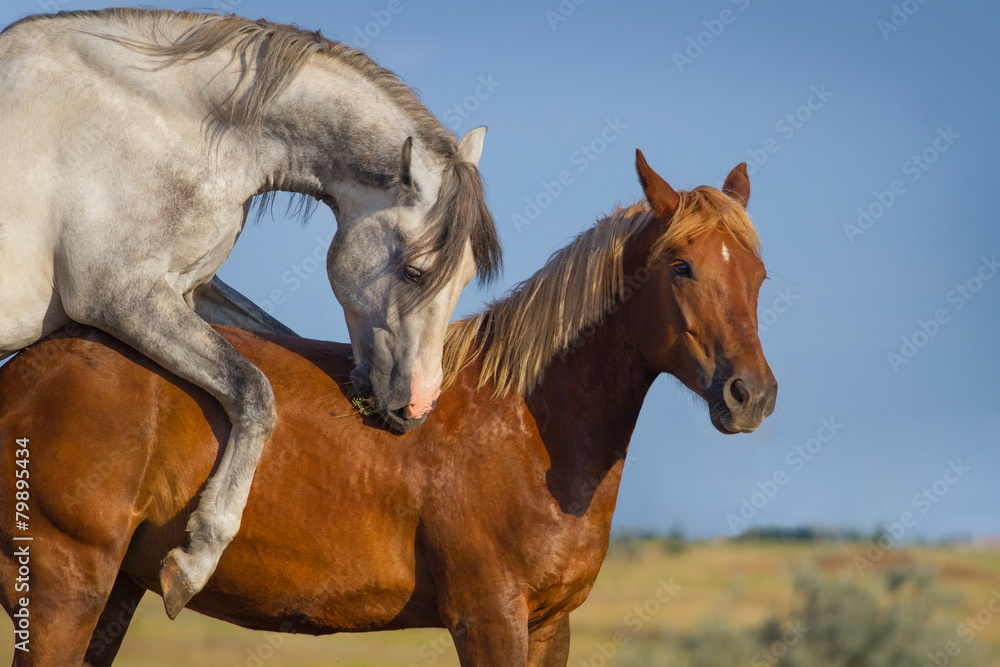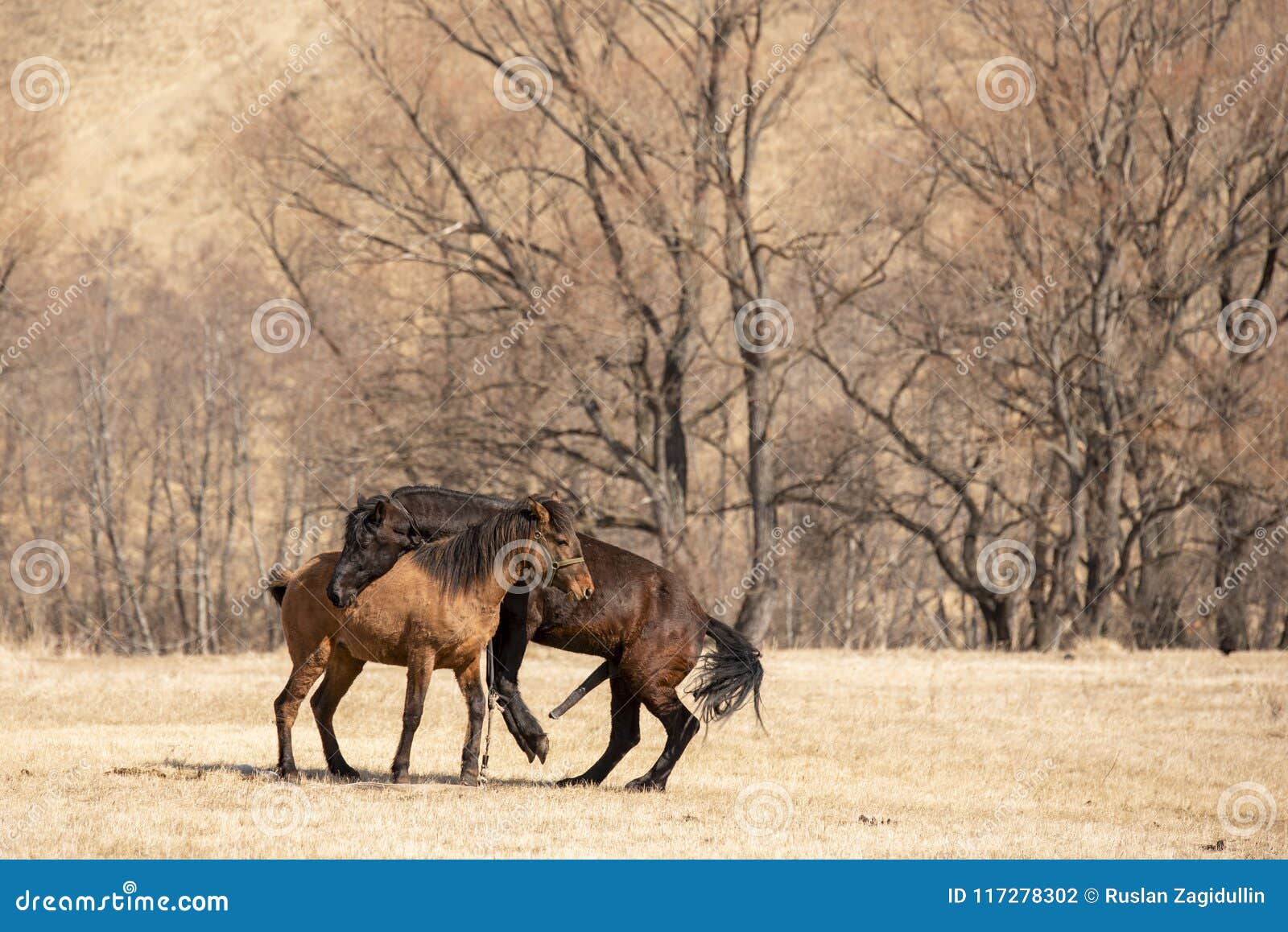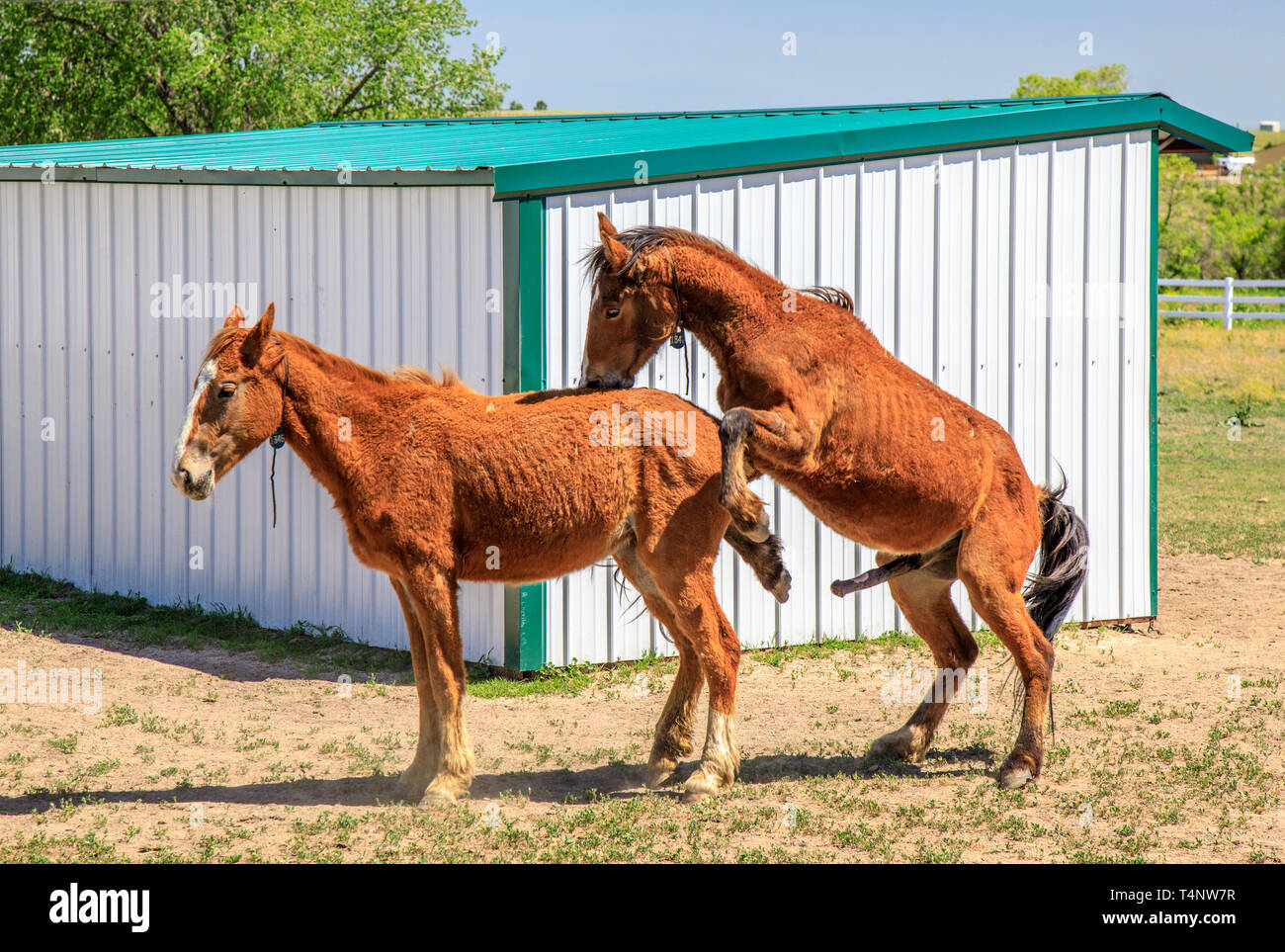The world of horse mating is a captivating blend of instinct, ritual, and biology that can seem almost mystical to the uninitiated. It is a natural process, essential for the continuation of equine species, encompassing a series of intricate stages and fascinating behaviours that culminate in the potential for new life. From the primal dance of courtship to the intricate biological processes leading to conception, understanding horse mating offers a profound insight into these magnificent animals.
This comprehensive guide aims to demystify the intricacies of horse mating, exploring everything from the fundamental biological foundations to the practical considerations that ensure successful breeding. Whether you are a seasoned breeder, an aspiring equine enthusiast, or simply curious about the natural world, delving into how horses mate provides a comprehensive view of their natural instincts, behaviours, and biological processes, laying the groundwork for responsible and effective equine management.
Table of Contents
- The Mystical World of Horse Mating: Instinct, Ritual, and Biology
- Biological Foundations of Equine Reproduction
- The Primal Dance: Courtship Rituals and Signals
- The Act of Covering: Horse Mating in Detail
- Breeding for Excellence: Human Management and Considerations
- Health Risks and Ethical Considerations in Horse Breeding
- The Journey to Foaling: Post-Mating Care and Gestation
- Beyond the Act: The Bonds and Behaviors of Mating Horses
The Mystical World of Horse Mating: Instinct, Ritual, and Biology
The process of horse mating is far more than a simple biological act; it is a complex interplay of ancient instincts, learned behaviours, and precise physiological timing. In the wild, it is a critical component of herd survival, driven by natural selection. Under human management, it becomes a carefully orchestrated event aimed at producing specific traits, temperaments, and athletic abilities. Understanding this multifaceted process, from the subtle cues exchanged between a stallion and a mare to the intricate cellular events of conception, is fundamental for anyone involved in equine care or breeding. It highlights the profound connection between the animal's innate drives and the careful stewardship required for successful reproduction. The natural world of horse mating is truly captivating, blending primal urges with sophisticated biological mechanisms.
- Ari Fletcher Leaked
- Devin Dickie
- Aiundress
- Aditi Mistry Nude Viral Videos
- Mom And Son Cctv Video Explained
Biological Foundations of Equine Reproduction
To truly understand horse mating, one must first grasp the underlying biological mechanisms that govern it. Reproduction in horses, like in many mammals, relies on the synchronized cycles of the mare and the readiness of the stallion. This intricate biological dance ensures that conditions are optimal for successful fertilization and the subsequent development of a foal.
The Mare's Reproductive Cycle
The mare is a seasonally polyestrous animal, meaning she experiences multiple estrous cycles during specific times of the year, primarily spring and summer. Her cycle is typically 21-22 days long and is influenced by photoperiod (daylight length). The key phases of her cycle include:
- Anestrus: A period of reproductive inactivity, usually during winter, when daylight hours are short.
- Transition: As daylight increases in spring, the mare's ovaries begin to become active, leading to irregular cycles before regular estrus begins.
- Estrus (Heat): This is the period of sexual receptivity, lasting approximately 5-7 days, during which the mare is receptive to the stallion and ovulation occurs, typically 24-48 hours before the end of estrus. Signs of estrus include winking (everting the clitoris), squatting, urinating frequently, raising the tail, and being generally more tolerant or even soliciting the stallion.
- Diestrus: The period following estrus, lasting about 14-15 days, when the mare is not receptive to the stallion. If conception does not occur, the uterus signals the body to restart the cycle. If conception does occur, pregnancy is maintained.
Monitoring the mare's cycle through teasing (introducing her to a stallion) and veterinary examinations (ultrasound) is crucial for pinpointing the optimal time for horse mating.
- Brett Baty Girlfriend
- Carly Jane Leaked
- Camilla Araujo Leak
- The Hounds Of Sisyphus 1
- Danny Granger Jehovah Witness
The Stallion's Role and Readiness
While mares have distinct cycles, stallions are generally capable of breeding year-round, though their fertility and libido can be influenced by season, age, health, and management. A healthy stallion produces millions of sperm daily, but the quality and quantity can vary. For successful horse mating, a stallion needs to exhibit strong libido and produce viable semen. Breeders often conduct a breeding soundness examination on stallions to assess their reproductive health, semen quality, and physical ability to perform the act of covering. This ensures the stallion is fit to contribute to the next generation, supporting the goal of breeding good quality, excellent, talented horses.
The Primal Dance: Courtship Rituals and Signals
Before the physical act of horse mating, there is a fascinating period of courtship, a "primal dance" filled with rituals and signals that communicate readiness and acceptance between the mare and stallion. This is true whether in the wild or under human management, though the latter often involves more controlled introductions.
- Stallion's Approach: A stallion typically approaches a mare with a display of dominance and interest. He may nicker, nuzzle, and sniff her, particularly around her flanks and hindquarters.
- Flehmen Response: A common and distinctive behaviour is the Flehmen response, where the stallion curls his upper lip back, exposing his front teeth. This allows him to draw pheromones from the mare into a specialized organ (vomeronasal organ) in the roof of his mouth, helping him assess her reproductive state.
- Mare's Receptivity Signals: A mare in estrus will typically respond positively to the stallion's advances. She may raise her tail, urinate frequently (often with a stream directed backward), "wink" her vulva, and lean into the stallion. She might also stand still and allow him to approach. A non-receptive mare, conversely, will often pin her ears, kick, squeal, or move away aggressively.
- Mutual Grooming and Nuzzling: In some cases, especially where horses can form strong bonds and camaraderie, courtship may involve mutual grooming or extended periods of nuzzling, reinforcing their connection. However, the primary goal of courtship in the context of horse mating is to confirm the mare's readiness.
Observing these courtship rituals and signals is paramount for breeders to determine the optimal time for a successful covering. It's about understanding the nuanced communication that precedes the physical act, ensuring both animals are willing and ready.
The Act of Covering: Horse Mating in Detail
The physical act of horse mating is known as "covering," a term used to describe when the stallion mounts the mare and ejaculates semen into her reproductive tract. This is the culmination of the courtship and biological readiness, a critical stage in the reproductive process.
When the mare is receptive, the stallion will mount her from behind. He will typically rest his chin on her rump, then lift his forelegs to straddle her back. With powerful thrusts, he will attempt to achieve intromission. Once intromission is achieved, the stallion will usually make several deep thrusts, followed by ejaculation. Ejaculation is often signaled by a "flagging" motion of the stallion's tail, where it lifts and lowers rapidly. The entire process, from mounting to dismounting, is typically quite quick, often lasting only a few seconds to a minute.
In a managed breeding environment, handlers are present to ensure the safety of both animals. This often involves the mare being in stocks or held by a handler, and the stallion being led by a handler. This control helps prevent injury, especially if the mare is initially hesitant or the stallion is overly enthusiastic. Proper technique is vital to ensure the stallion's penis is guided correctly into the mare's vagina, maximizing the chances of successful sperm transfer. The goal is a proper covering, ensuring the transfer of sperm to facilitate conception.
Breeding for Excellence: Human Management and Considerations
While horse mating is a natural process, human intervention in breeding programmes is often aimed at achieving specific goals, such as producing a horse with superior athletic ability, desirable temperament, or specific conformational traits. This involves careful planning, selection, and management, going beyond just a "quick one" to ensure the proper way to breed good quality, excellent, talented horses.
Choosing the Right Stock for Quality Offspring
The foundation of successful breeding lies in the careful selection of the mare and stallion. Breeders consider a multitude of factors:
- Genetics and Pedigree: Analyzing the lineage for desirable traits, performance records, and absence of genetic diseases.
- Conformation: Assessing the physical structure for soundness, balance, and suitability for a specific discipline.
- Temperament: Selecting individuals with good dispositions, as temperament is highly heritable.
- Health and Soundness: Ensuring both mare and stallion are free from lameness, chronic conditions, or reproductive issues that could be passed on or hinder the breeding process.
- Performance Records: For sport horses, the performance history of both parents is a strong indicator of potential offspring quality.
The goal is to pair individuals whose strengths complement each other, mitigating weaknesses and maximizing the chances of producing an exceptional foal. This meticulous selection process is integral to breeding good quality, excellent, talented horses.
Timing is Everything: Optimizing Conception Rates
Precise timing is arguably the most critical practical consideration in managed horse mating. As discussed, mares are only receptive and fertile for a short window within their estrous cycle. To maximize the chances of conception, breeders and veterinarians employ various techniques:
- Teasing: Regularly exposing the mare to a stallion to observe her behavioural signs of estrus.
- Rectal Palpation and Ultrasonography: Veterinary examination to monitor follicular development on the ovaries, assess uterine health, and predict ovulation. This allows for precise timing of the covering.
- Hormonal Manipulation: In some cases, hormones (like GnRH or hCG) may be used to induce ovulation or regulate the mare's cycle, allowing for scheduled breedings.
- Semen Quality and Handling: For artificial insemination (AI), proper collection, evaluation, and handling of semen (fresh, cooled, or frozen) are crucial to maintain sperm viability.
Understanding horse breeding steps and the nuances of timing significantly increases the likelihood of a successful pregnancy, reducing costs and stress for both animals and breeders.
Health Risks and Ethical Considerations in Horse Breeding
While the goal of horse mating is reproduction, it is imperative to acknowledge the potential health risks involved for both the mare and the foal, as well as the ethical responsibilities of breeders. Adhering to high standards of care and informed decision-making is crucial, aligning with YMYL (Your Money or Your Life) principles in ensuring the well-being of these valuable animals.
Potential Health Complications for Mare and Foal
The breeding process, pregnancy, and foaling can present various health challenges:
- For the Mare:
- Reproductive Tract Infections: Post-breeding infections can occur, requiring veterinary treatment.
- Dystocia (Difficult Birth): Foaling can be complicated, necessitating veterinary intervention and potentially leading to injury or death for mare and/or foal.
- Metabolic Issues: Pregnancy and lactation place significant demands on the mare's body, requiring careful nutritional management.
- Injury during Mating: Although rare with careful handling, injuries can occur during the physical act of covering.
- For the Foal:
- Genetic Disorders: Responsible breeding aims to minimize the risk of passing on undesirable genetic conditions. Pre-breeding genetic testing is increasingly common.
- Developmental Issues: In-utero development can be affected by maternal health or external factors.
- Foaling Complications: Foals can suffer from hypoxia, trauma, or other issues during a difficult birth.
- Neonatal Diseases: Foals are vulnerable to various diseases in their first few days and weeks of life, requiring diligent care.
Ethical breeding practices prioritize the health and welfare of the animals above all else. This includes thorough pre-breeding health checks, providing excellent nutrition and veterinary care throughout pregnancy, and ensuring a safe and clean environment for foaling. Breeders must be prepared for potential complications and have access to professional veterinary assistance. Understanding horse breeding steps and health risks is paramount for responsible ownership.
The Journey to Foaling: Post-Mating Care and Gestation
Once a successful horse mating (covering) has occurred, the journey towards a new life begins. The mare's gestation period typically lasts around 340 days, though it can vary from 320 to 365 days. The period immediately following mating and throughout gestation is critical for the healthy development of the foal and the well-being of the mare.
- Pregnancy Diagnosis: Veterinary checks, usually via ultrasound, are performed around 14-16 days post-mating to confirm pregnancy. Early detection allows for management adjustments and ensures the mare is not re-bred if already pregnant. Further checks may occur at 28 days and 45-60 days to confirm viability and detect potential twins.
- Nutritional Management: The pregnant mare's diet needs to be carefully managed, especially in the last trimester when the foal undergoes rapid growth. Adequate protein, vitamins, and minerals are essential for both mare and foal health.
- Veterinary Care: Regular veterinary check-ups throughout gestation are important to monitor the mare's health, administer vaccinations, and deworm as needed.
- Exercise and Environment: Mares should be kept in a safe, clean environment and maintain a moderate exercise routine, avoiding excessive stress or strenuous activity, particularly in late pregnancy.
The successful outcome of horse mating extends far beyond the act itself, requiring dedicated care and management for nearly a year to bring a healthy foal into the world.
Beyond the Act: The Bonds and Behaviors of Mating Horses
While the biological imperative of reproduction drives horse mating, the interactions between stallions and mares, particularly in natural settings, reveal deeper social dynamics. Horses are animals that can form strong bonds and camaraderie, and while these are not always directly tied to the reproductive act, the context of mating can certainly highlight varied behaviours.
In wild or semi-wild herds, a dominant stallion will typically be the primary breeder, maintaining a harem of mares. His interactions with these mares go beyond just mating; he protects them, guides them, and maintains herd cohesion. The mare, in turn, chooses to stay with him, demonstrating a form of bond. During mating and separating, horses can act in various ways, displaying different levels of affection, dominance, or even aggression, depending on individual personalities and herd dynamics. Some mares may show immediate disinterest after covering, while others might linger. Stallions, after a successful covering, may remain near the mare, though their primary focus shifts from courtship to other herd responsibilities.
In managed breeding, these natural behaviours are often curtailed for safety and efficiency. However, observing the individual temperaments and interactions of mares and stallions can still provide valuable insights into their overall well-being and suitability for a breeding program. Understanding these natural instincts, behaviors, and biological processes not only aids in successful breeding but also deepens our appreciation for the complex social lives of horses.
The world of horse mating is indeed a captivating blend of instinct, ritual, and biology. From the initial courtship ritual to the conception of a foal, every stage is vital. We have explored the intricacies of horse mating, from the biological foundations to the practical considerations that ensure successful breeding. This comprehensive guide has aimed to provide a thorough understanding of the process, highlighting the importance of careful management, ethical considerations, and a deep respect for these magnificent animals.
We hope this article has provided you with valuable insights into the fascinating world of horse mating. If you have any further questions or experiences to share, please feel free to leave a comment below. Your insights contribute to our collective understanding of equine reproduction. Don't forget to share this article with fellow horse enthusiasts, and explore our other guides on equine health and management for more educational content.
Related Resources:



Detail Author:
- Name : Dante Watsica
- Username : berta14
- Email : lincoln.powlowski@sauer.com
- Birthdate : 1979-08-24
- Address : 5725 Zemlak Corners Apt. 828 West Kaley, VA 53345-2305
- Phone : (283) 820-6273
- Company : Labadie, Kuphal and Pfannerstill
- Job : Embalmer
- Bio : Corrupti sint fugiat provident non. Quia rerum est voluptas sint. Hic error facere harum.
Socials
twitter:
- url : https://twitter.com/revamarvin
- username : revamarvin
- bio : Recusandae sed velit asperiores cum qui. Similique distinctio nemo iusto sint quia qui odit. Exercitationem eum enim et.
- followers : 536
- following : 274
instagram:
- url : https://instagram.com/rmarvin
- username : rmarvin
- bio : Et rerum id ea est et. Rerum dolores sed qui rem ipsa illum. Voluptates voluptas expedita non.
- followers : 2058
- following : 815